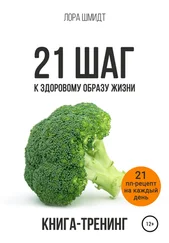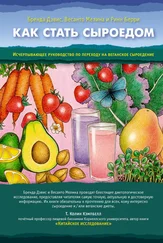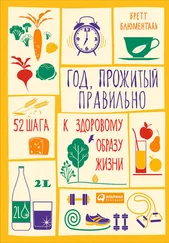34. Bahadoran Z, Tohidi M, Nazeri P, et al. Effect of broccoli sprouts on insulin resistance in type 2 diabetic patients: A randomized double-blind clinical trial. Int J Food Sci Nutr . 2012; 63(7): 767–771.
35. Boddupalli S, Mein JR, Lakkanna S, James DR. Induction of phase 2 antioxidant enzymes by broccoli sulforaphane: Perspectives in maintaining the antioxidant activity of vitamins a, C, and e. Front Genet . 2012; 3: 7.
36. Mishra C, Singh B, Singh S, et al. Role of phytochemicals in diabetes lipotoxicity: an overview. 4(4): 1604–1610.
37. Firdous SM. Guest Editorial: phytochemicals for treatment of diabetes. EXCLI Journal. 2014; 13: 451–453.
38. Heather Hausenblas. Resveratrol in diabetes care. Natural Medicine Journal . 2014; 6(2).
39. Axelsson AS, Tubbs E, Mecham B, et al. Sulforaphane reduces hepatic glucose production and improves glucose control in patients with type 2 diabetes. Sci Transl Med . 2017; 9(394): eaah4477.
40. Son MJ, Miura Y, Yagasaki K. Mechanisms for antidiabetic effect of gingerol in cultured cells and obese diabetic model mice. Cytotechnology . 2015; 67(4): 641–652.
41. Bansode T, Salalkar B, Dighe P, et al. Comparative evaluation of antidiabetic potential of partially purified bioactive fractions from four medicinal plants in alloxan-induced diabetic rats. AYU (An Int Q J Res Ayurveda) . 2017; 38(2): 165.
42. Gebel E. Resveratrol: A Miracle Molecule? Diabetes Forecast . 2009; 62(5): 50–51.
43. Gonzalez-Abuin N, Pinent M, Casanova-Marti A, et al. Procyanidins and their healthy protective effects against type 2 diabetes. Curr Med Chem . 2015; 22(1): 39–50.
44. Turrini E, Ferruzzi L, Fimognari C. Possible effects of dietary anthocyanins on diabetes and insulin resistance. Curr Drug Targets . 2017; 18(6): 629–640.
45. Khan N, Mukhtar H. Tea polyphenols in promotion of human health. Nutrients . 2018; 11(1).
46. Sluijs I, Cadier E, Beulens JWJ, et al. Dietary intake of carotenoids and risk of type 2 diabetes. Nutr Metab Cardiovasc Dis . 2015; 25(4): 376–381.
47. Roohbakhsh A, Karimi G, Iranshahi M. Carotenoids in the treatment of diabetes mellitus and its complications: A mechanistic review. Biomed Pharmacother . 2017; 91: 31–42.
48. Guo H, Ling W. The update of anthocyanins on obesity and type 2 diabetes: Experimental evidence and clinical perspectives. Rev Endocr Metab Disord . 2015; 16(1): 1–13.
49. Fabricio G, Malta A, Chango A, De Freitas Mathias PC. Environmental contaminants and pancreatic beta-cells. J Clin Res Pediatr Endocrinol . 2016; 8(3): 257–263.
50. Yokoi K, Konomi A. Toxicity of so-called edible hijiki seaweed (Sargassum fusiforme) containing inorganic arsenic. Regul Toxicol Pharmacol . 2012; 63(2): 291–297.
51. Mania M, Rebeniak M, Szynal T, et al. Total and inorganic arsenic in fish, seafood and seaweeds – exposure assessment. Rocz Panstw Zakl Hig . 2015; 66(3): 203–210.
52. Nachman KE, Ginsberg GL, Miller MD, Murray CJ, Nigra AE, Pendergrast CB. Mitigating dietary arsenic exposure: Current status in the United States and recommendations for an improved path forward. Sci Total Environ . 2017; 581–582: 221–236.
53. Cubadda F, Jackson BP, Cottingham KL, et al. Human exposure to dietary inorganic arsenic and other arsenic species: State of knowledge, gaps and uncertainties. Sci Total Environ . 2017; 579: 1228–1239.
54. Smith-Spangler C, Brandeau ML, Hunter GE, et al. are organic foods safer or healthier than conventional alternatives? Ann Intern Med . 2012; 157(5): 348.
55. Mie A, Andersen HR, Gunnarsson S, et al. Human health implications of organic food and organic agriculture: A comprehensive review. Environ Heal . 2017; 16(1): 111.
56. Hurtado-Barroso S, Tresserra-Rimbau A, Vallverdú-Queralt A, Lamuela-Raventós RM. Organic food and the impact on human health. Crit Rev Food Sci Nutr . 2019: 59(4): 704–714.
57. Yang T, Doherty J, Zhao B, et al. Effectiveness of Commercial and Homemade Washing Agents in Removing Pesticide Residues on and in Apples. J Agric Food Chem . 2017; 65(44): 9744–9752.
58. Birlouez-Aragon I, Saavedra G, Tessier FJ, et al. A diet based on high-heat-treated foods promotes risk factors for diabetes mellitus and cardiovascular diseases. Am J Clin Nutr . 2010; 91(5): 1220–1226.
59. Liu G, Zong G, Wu K, et al. Meat cooking methods and risk of type 2 diabetes: Results from three prospective cohort studies. Diabetes Care . 2018; 41(5): 1049–1060.
60. Sugimura T, Wakabayashi K, Nakagama H, Nagao M. Heterocyclic amines: Mutagens/carcinogens produced during cooking of meat and fish. Cancer Sci . 2004; 95(4): 290–299.
61. Khan MR, Busquets R, Saurina J, et al. Identification of seafood as an important dietary source of heterocyclic amines by chemometry and chromatography-mass spectrometry. Chem Res Toxicol . 2013; 26(6): 1014–1022.
62. Lee Y-N, Lee S, Kim J-S, et al. Chemical analysis techniques and investigation of polycyclic aromatic hydrocarbons in fruit, vegetables and meats and their products. Food Chem . 2019; 277: 156–161.
63. Zhang Q, Qin W, Lin D, et al. The changes in the volatile aldehydes formed during the deepfat frying process. J Food Sci Technol . 2015; 52(12): 7683–7696.
64. Goldberg T, Cai W, Peppa M, et al. Advanced glycoxidation end products in commonly consumed foods. J Am Diet Assoc . 2004; 104(8): 1287–1291.
65. Chen G, Scott Smith J. Determination of advanced glycation endproducts in cooked meat products. Food Chem . 2015; 168: 190–195.
66. Semla M, Goc Z, Martiniaková M, et al. Acrylamide: a common food toxin related to physiological functions and health. Physiol Res . 2017; 66(2): 205–217.
67. Hamidi EN, Hajeb P, Selamat J, Abdull Razis AF. Polycyclic Aromatic Hydrocarbons (PAHs) and their Bioaccessibility in Meat: a Tool for Assessing Human Cancer Risk. Asian Pac J Cancer Prev . 2016; 17(1): 15–23.
68. Dobarganes C, Márquez-Ruiz G. Possible adverse effects of frying with vegetable oils. Br J Nutr . 2015; 113(S2): S49–S57.
69. Sansano M, Juan-Borrás M, Escriche I, et al. Effect of pretreatments and air-frying, a novel technology, on acrylamide generation in fried potatoes. J Food Sci . 2015; 80(5): T1120–T1128.
70. Yaacoub R, Saliba R, Nsouli B, Khalaf G, Birlouez-Aragon I. Formation of lipid oxidation and isomerization products during processing of nuts and sesame seeds. J Agric Food Chem . 2008; 56(16): 7082–7090.
71. Provenzano LF, Stark S, Steenkiste A, Piraino B, Sevick MA. Dietary sodium intake in type 2 diabetes. Clin Diabetes . 2014; 32(3): 106–112.
72. Harnack LJ, Cogswell ME, Shikany JM, et al. Sources of sodium in us adults from 3 geographic regions. Circulation . 2017; 135(19): 1775–1783.
73. U.S. Department of Agriculture. Agriculture Research Service. Nutrient Data Library. USDA National Nutrition Database for Standard Reference, Legacy Version Current: April 2018. URL: https://ndb.nal.usda.gov/ndb/search/list.
74. Lee Y-J, Wang M-Y, Lin M-C, Lin P-T. Associations between vitamin B12 status and oxidative stress and inflammation in diabetic vegetarians and omnivores. Nutrients . 2016; 8(3): 118.
75. Bell DSH. Metformin-induced vitamin B12 deficiency presenting as a peripheral neuropathy. South Med J . 2010; 103(3): 265–267.
76. Liu Q, Li S, Quan H, Li J. Vitamin B12 status in metformin treated patients: systematic review. Pietropaolo M, ed. PLoS One . 2014; 9(6): e100379.
77. Institute of Medicine (US) Standing Committee on the Scientific Evaluation of Dietary Reference Intakes and its Panel on Folate OBV and C. Dietary Reference Intakes for Thiamin, Riboflavin, Niacin,VitaminB6,Folate,VitaminB12,PantothenicAcid,Biotin,andCholine . National Academies Press (US); 1998.
Читать дальше
Конец ознакомительного отрывка
Купить книгу
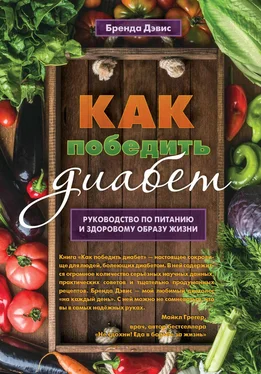

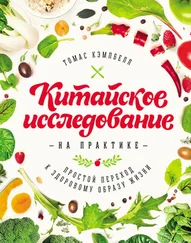

![Карин Дина - Справочник сыроеда [Краткое руководство по питанию свежей растительной пищей]](/books/389267/karin-dina-spravochnik-syroeda-kratkoe-rukovodstvo-thumb.webp)




